Image: Disney
From a surprising technological marvel in 1987 to what some consider an oversaturation today, the role of the simulator (or, more broadly, "screens") in theme parks has indeed spread quickly... And that should come as no surprise. After all, though the "ride the movies" era got its start under Michael Eisner's regime in the '80s and '90s, it's arguably stronger than ever today. Many Disney Parks fans, for example, worry that the U.S. parks will never again see a truly original E-Ticket, with seemingly every major addition in recent memory connected to a box office blockbuster.
And maybe that's fair given that Disney has spent billions and billions of dollars to acquire Pixar, Marvel, and Star Wars while also undergoing its own "Disney Revival" (a proposed follow-up to the "Disney Renaissance") with blockbuster animated features like Frozen, Wreck-it Ralph, Zootopia, and Moana.
And that brings us to...
The Case FOR Simulators and Screens
Image: Disney
1) IF THIS IS STILL A "RIDE THE MOVIES" ERA, SIMULATORS ARE SIMPLY THE SMARTEST WAY TO DO IT. If you're stepping onto a ride purported to take you along an adventure with Harry Potter and friends, wouldn't you rather see Daniel Radcliffe reprise his role, tearing through the sky on a broom with you zooming right behind rather than see an animatronic of him on a broom suspended from the ceiling? Isn't STAR TOURS: The Adventures Continue a perfect way for a single ride to truly transport guests to the worlds of Star Wars; better than any physical dark ride could do it? Isn't Transformers: The Ride stronger for being all screens than including clunky animatronics to punctuate otherwise explosive high-action scenes?
In an era where riding through beloved movies is key, simulators and screens let us see the "real" characters and the "real" locales as they truly are rather than limited "theme park" versions of them.
2) SIMULATORS CAN BE AS NUANCED AND EMOTIONAL AS ANY OTHER RIDE. Despite common criticism that simulators are, by nature, colder and less authentic than other dark rides, we find this untrue.
Image: Disney
In the three decades that designers have been tinkering with the technology behind simulators, they've developed a keen understanding of their strengths. So while we argue in our Countdown: 25 Best Audio-Animatronics on Earth that no "screen" can replace a great moment with Mr. Lincoln, Mickey battling a fire-breathing dragon, or a climactic encounter with a gigantic monster, designers know that, too. So instead of trying to beat traditional rides at their own game, designers draw on what simulators can do better than physical rides: the goosebumps of getting a hologram transmission from Princess Leia; the tear-jerking score and seamless transitions of Soarin'; the free-falling comic book thrill of Spider-Man... Simulators can't do what traditional dark rides can do... but the inverse is true, too.
Image: Universal / Marvel
3) SIMULATORS ARE NIMBLE. Traditional dark rides (especially the more elaborate ones) are (sometimes literally) concrete. They are what they are. While Disney may be able to accentuate classics with fresh special effects or projection mapping, for the most part they are what they are until they're replaced. But simulators, by design, can change quickly. That's especially important given the advance of technology (with Harry Potter and the Forbidden Journey, for example, being "upgraded" no less than 3 times since its opening less than a decade ago, from HD to 4K; similar upgrades have kept Spider-Man and STAR TOURS going as well) but also creatively.
For better or worse, it's what allowed The Funtastic World of Hanna-Barbera to convert to Jimmy Neutron's Nicktoon Blast which in turn switched to Despicable Me: Minion Mayhem. Regardless of which you think is the best or most relevant, it's really just a simple switch of film (and granted, some major remodeling of queues, preshows, etc) that gives that ride a new lease on life every decade or so. See also, Back to the Future becoming The Simpsons; STAR TOURS making way for its "prequel."
Image: SeaWorld Parks
Look at Busch Gardens Williamsburg, whose European-themed simulator went from Questor (1990) to King Arthur's Challenge (1996) to Corkscrew Hill (2001) to Europe in the Air (2011) and now Battle for Eire (2018). In each subsequent update, the ride was reborn, re-marketed, and revitalized for a new age. Each time, it by default became more high definition, ending with its current incarnation where riders on the motion platform look out on a 360-degree virtual world through virtual reality headsets!
The Case AGAINST Simulators and Screens
1) SIMULATORS CAN OVERSATURATE PARKS. It's become a leading complaint about Universal, and probably for good reason. When we took a frank (and surprising) look at the Rides Universal Needs if it Wants to Beat Disney, we were surprised to find that Universal Studios Florida has 15 proper rides, and that a majority of them are essentially built on looking at a screen with varying degrees of jostling, with most of that majority requiring 3-D glasses to do so… That’s a pretty tiring idea! It stands to reason that if I pay big bucks to visit a theme park and feel that most of my day amounted to being rumbled in front of a screen, I might feel that my day was not well-spent.
Image: Universal
How many "narrative-friendly" excuses could possibly exist for why we need to pick up 3D glasses in what feels like every queue line all day long?
Sources indicate that, internally, Universal Creative admits that it's tipped the scales too far, and has committed to leaving screens out of its next phase of attractions, from the new Harry Potter roller coaster coming to the Wizarding World through Super Nintendo World and beyond. That's very, very good news. Luckily, Disney has traditionally maintained a healthier balance (thanks to its storied 60+ year history, much of it predating simulators), but there's another problem with screens that IS becoming a major marker for fans...
2) SCREENS MAY ENCOURAGE PARKS TO THINK AND ACT SHORT-TERM. Whether fans like to hear it or not, Disney learned quite a bit from Universal's strategy in the 2000s, where classic attractions – no matter how beloved! – fell in the name of progress.
Image: Universal
Fans accuse Universal of stocking its parks with "flavor of the week" attractions with little care for their longevity, stuffing in high-earning intellectual properties even knowing that the attractions they created wouldn't last more than a decade. The abysmal Fast and Furious: Supercharged, the awful Race Through New York with Jimmy Fallon... By all accounts, none of those attractions will still be around in 2030... and that's the point! Simulators and screens can be swapped out at the press of a button.
And like it or not, that's increasingly happening at Disney Parks, too. By time Disney finishes its 3 Marvel super hero-themed lands at Disney California Adventure, Walt Disney Studios, and Hong Kong Disneyland, the "Marvel Cinematic Universe" that it's based on will have released its last film and moved into a new era absent Captain America, Iron Man, Guardians of the Galaxy, and the Avengers. Give it ten years or so and a new generation of super hero fans won't know Robert Downey Jr.'s Iron Man or Chris Pratt's Star Lord at all. In fact, if they know the characters, it'll likely be a "rebooted" version with new actors, new looks, and new stories...
Image: Disney / Marvel
But that's okay! Disney will simply swap out the screens on Guardians of the Galaxy – Mission: BREAKOUT! Fans always argued that that "hip, irrevent" thrill ride blasting '70s rock music over California Adventure's 1940s Hollywood Land wouldn't be as timeless as the Lost Legend: Tower of Terror that it replaced... but that was never its intention. Guardians of the Galaxy – Mission: BREAKOUT! won't last forever, and it wasn't meant to. It was meant to quickly and inexpensively insert the characters into the park while they were still relevant, and will likely be a different ride entirely by the end of the next decade. That "expendable" nature of rides leaves Disney feeling a little too much like Universal, chasing quick payoffs rather than thinking of what the parks should be in 10, 20, or 50 years.
3) SCREENS AREN'T SPECIAL. And this is a reality that theme parks will soon need to face... Think about 3D films, like the Lost Legend: Captain EO, that once spread across theme parks and science centers around the world. Novel, interesting, and exciting, 3D films felt new and cutting edge and special... Until 3D re-entered mainstream cinemas... then home theater systems... then, essentially, evaporated as the trend fell away. In other words, 3D films were a "hip," cool technology that theme parks should showcase in spectacular ways.
Image: Disney
Yet today, the three 3D theaters at the Disneyland Resort (formerly, Captain EO, Muppet*Vision, and It's Tough to be a Bug) are wasted space. One shows a Star Wars clip show to empty theaters, one alternates a decade-old Philharmagic with "extended sneak peeks" of upcoming films, and the other was cleared out to build the new Avengers Campus.
Why? Because that wave has passed. It took a few decades, sure, but 3D films eventually became commonplace, losing their appeal and seeing return visitor numbers drop. It now seems almost certain that Disney will never bother financing a "new" 3D film for any of the theaters across its resorts. 3D films just aren't "attractions" anymore, because they're available anywhere.
Image: Disney
And given that increasingly high-definition screens and even virtual reality are now household wares and mall attractions, could simulators ever lose their appeal in the same way? To some extent, it's already happened. That's why almost every Disney or Universal simulator from the '90s – not so awfully long ago – is already gone, replaced, or re-done with a new intellectual property. As long as Disney and Universal are committed to such continuous, costly updates, so be it. But will simulators always be showstoppers in the minds of visitors? We'll see...
The future of immersion? (2020 and beyond)
Image: Disney
In the 1950s, Disneyland's simple, flat, blacklight dark rides took guests into their favorite fairytales.
In the 1960s, elaborate dark rides – the magnum opus of Walt and his team – created larger-than-life, cinematic experiences like the Haunted Mansion and Pirates of the Caribbean.
In the 1980s and '90s, Michael Eisner's tenure literally turned Disney Parks into places for guests to "ride the movies," diversifying with new technologies including the modern motion simulator.
Image: Universal
In the 2000s and 2010s, continuous technological advancements have taken the simple ATLAS and evolved into EMVs, SCOOPs, flying theaters, KUKA Robo-Arms, and other inconcievable devices meant to propel guests into worlds both physical and digital, with virtual reality on the horizon. Gripping, emotional, thrilling, beautiful, funny, and wild, simulators have become as diverse as dark rides, with any two being no more similar than Peter Pan's Flight and the Modern Marvel: DINOSAUR.
Image: Universal
At each step, every new innovation has always been to find a better way to transport guests into a new world. And in the last decade, fabulous advances have been made there, too... Thanks (again) to the Wizarding World of Harry Potter, a very new idea has been born: what if immersion isn't really about dark rides or simulators?
After all, Star Tours may propel us into the unthinkable Star Wars galaxy and mythos for a wild interplanetary ride...
Image: Disney / Lucasfilm
...but Star Wars: Galaxy's Edge invites us to live our own Star Wars story... to truly step into the world we've only imagined... To eat where the characters eat; shop where they shop; to be a part of their world.
Star Wars: Galaxy's Edge; Springfield, U.S.A.; Cars Land; Pandora – The World of AVATAR; The Wizarding World of Harry Potter... perhaps these immersive, habitable worlds truly are the next logical evolution of the simulator, inviting us to step into the places we've seen on screen rather than just riding through them... But the long and short of the rise and reign of the simulator is simply that these virtual rides aren't going away... and when used wisely, they represent some of the most spectacular rides ever created...
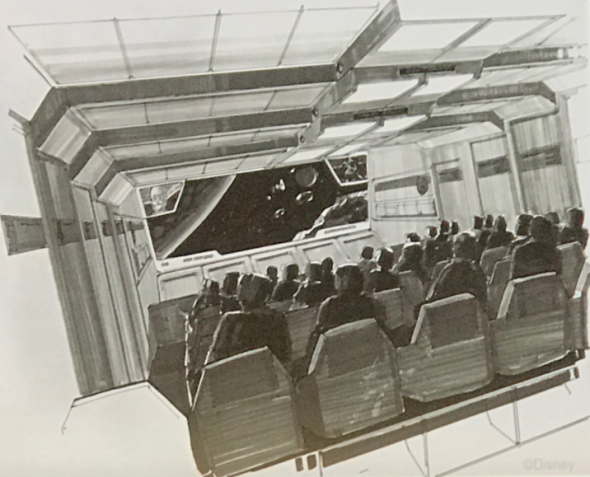
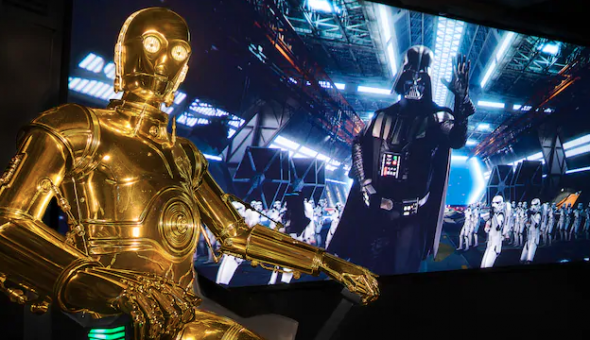
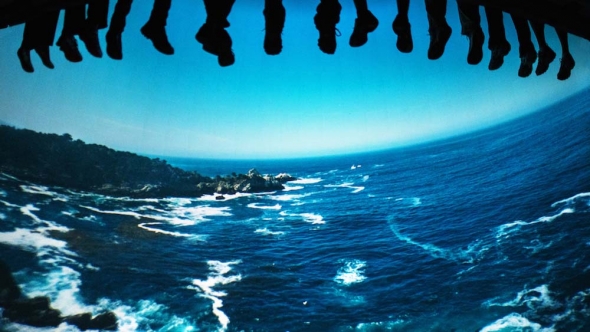
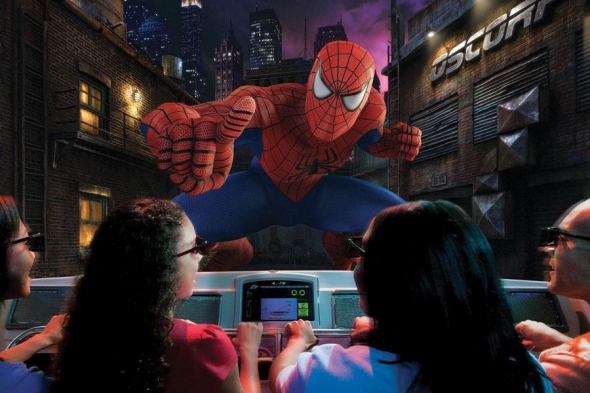
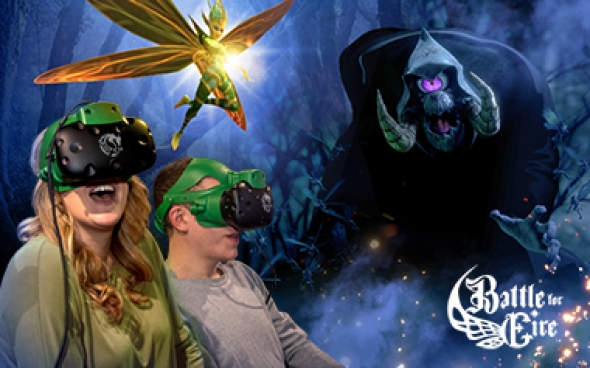
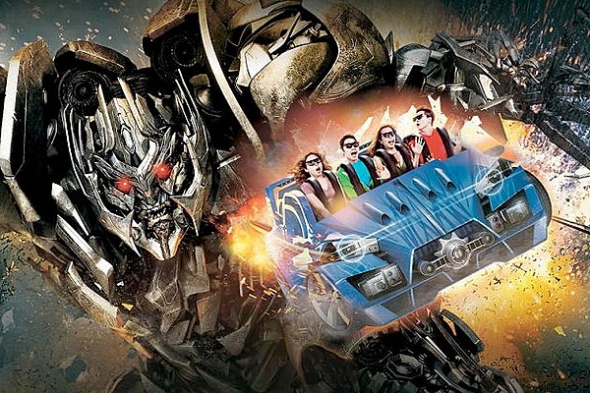
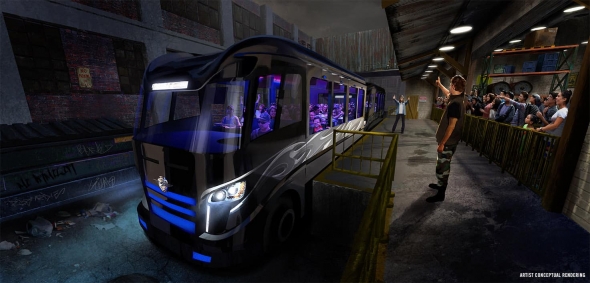
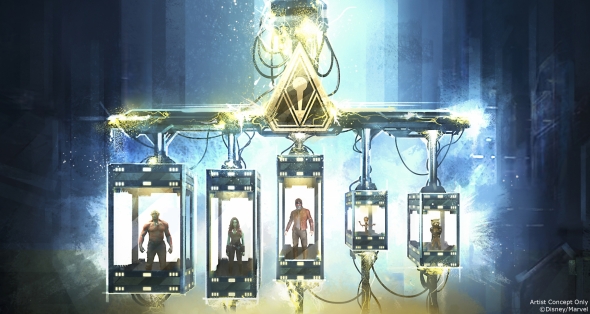
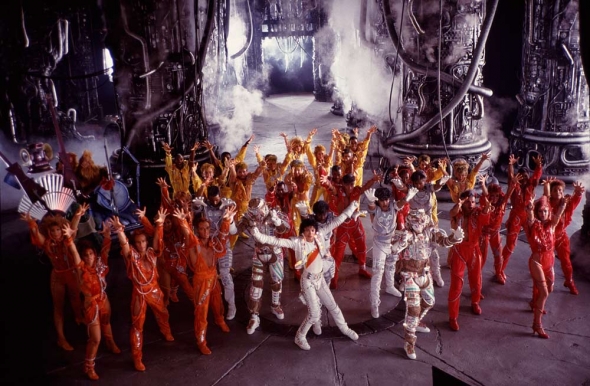
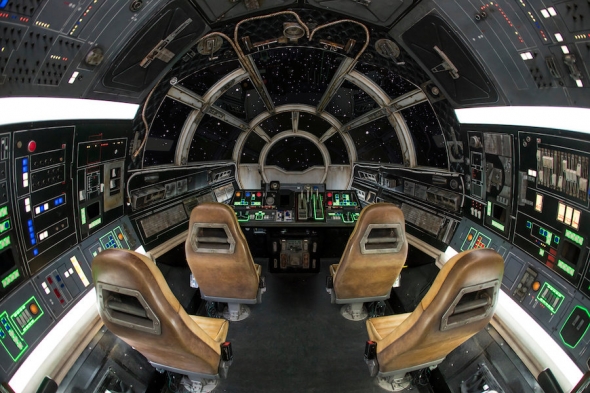
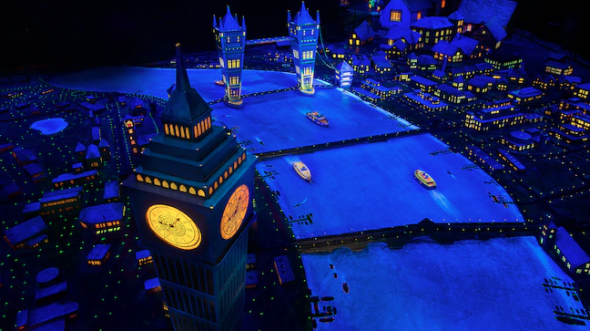
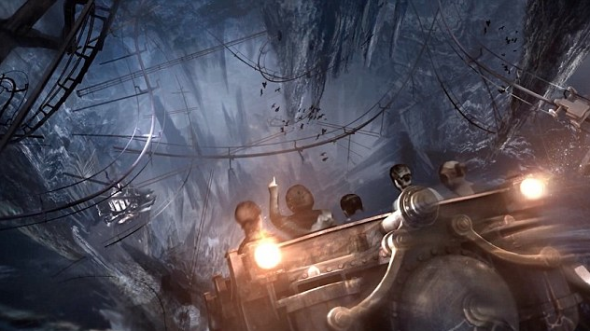
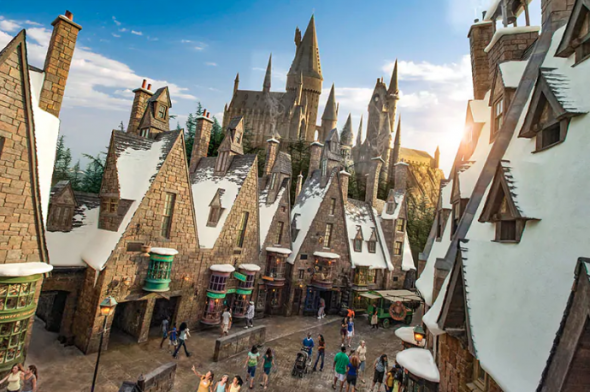
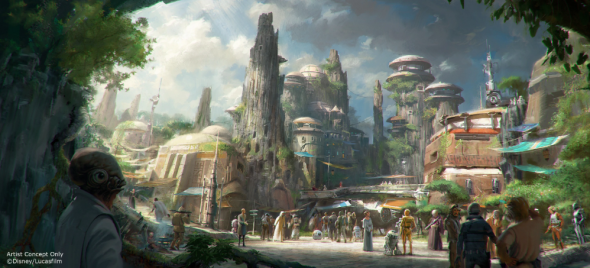

Add new comment